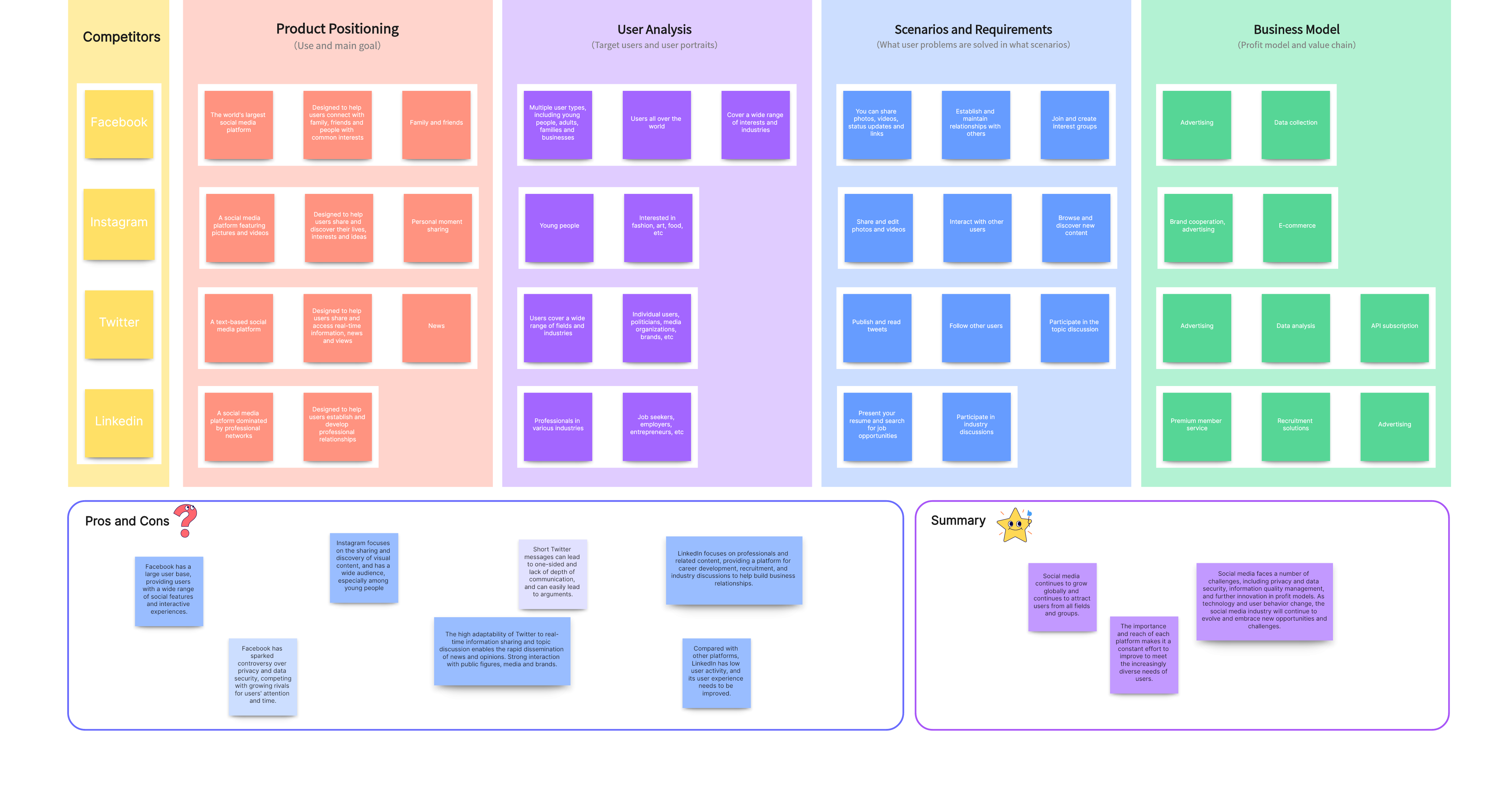In a competitive business landscape, knowing your competitors' strengths and weaknesses is crucial for carving out a unique position in the market. That's where product competitive analysis comes in. This article aims to provide a comprehensive understanding of product competitive analysis and show you how to conduct it with a powerful whiteboard tool. Keep reading.
What Is Product Competitive Analysis
Product competitive analysis is a strategic process where a company compares its product with its competitors' offerings to identify their advantages and disadvantages relative to their own product. It is an essential part of the product development process and marketing strategy.
This analysis involves assessing a variety of elements, including product features, pricing, market share, customer reviews, and more. The ultimate goal is to glean actionable insights that can be used to enhance your own product, improve marketing strategies, and ultimately gain a competitive edge in the market.

Why Product Competitive Analysis Matters
Conducting a product competitive analysis offers several benefits:
- Understanding the Market: It helps businesses understand the current market trends and consumer expectations.
- Identifying Unique Selling Propositions (USPs): By comparing your product with others, you can identify unique features or attributes that set your product apart.
- Inspiring Product Development: Seeing what features competitors offer can inspire improvements or new features for your product.
- Informing Marketing Strategies: Knowing where your product stands among competitors can help shape your marketing messages, targeting, pricing strategies, etc.
- Anticipating Competitors' Moves: Understanding competitors' products can provide insights into their future plans, helping you stay ahead of the curve.
What Should Be Included in a Product Competitive Analysis
A product competitive analysis should include several key components to provide a comprehensive understanding of your product's position in the market. Here are the main elements that should be included:
- Identification of Competitors: Start by listing both your direct and indirect competitors. Direct competitors offer similar products or services, while indirect competitors may offer alternative solutions that could divert your potential customers.
- Product Overview: Provide a brief overview of each competitor's product, including its key features, pricing, target audience, and unique selling propositions.
- Strengths and Weaknesses: Identify each competitor's strengths and weaknesses. This could be in terms of product features, pricing, customer service, marketing strategies, etc.
- Market Position: Evaluate each competitor's market position. Consider factors like market share, brand reputation, and perceived value among customers.
- User Experience: Analyze the user experience offered by each competitor's product. This includes aspects like design, usability, customer support, and overall satisfaction.
- Opportunities and Threats: Based on your analysis, identify potential opportunities for your product to differentiate itself or improve upon its offering. Also note any threats posed by competitors that could impact your product's success.
- Summary and Action Plan: Finally, summarize your findings and outline an action plan based on your analysis. This could include strategies to capitalize on identified opportunities or mitigate potential threats.
Remember, a product competitive analysis is a dynamic document that should be updated regularly as market conditions change and new competitors emerge.
How to Perform a Product Competitive Analysis with Online Whiteboard
Performing a product competitive analysis using a whiteboard, especially an online one like Boardmix, can be an interactive and efficient way to visualize your analysis. Here's a step-by-step guide:

- Choose Your Online Whiteboard: Start by selecting an online whiteboard tool that suits your needs. Tools like Boardmix offer real-time collaboration, which is ideal for team-based analyses.
- Identify Your Competitors: Create a section on your whiteboard for each competitor you plan to analyze. This will serve as your workspace for gathering data and insights about each one.
- Product Overview: In each competitor's section, provide a brief overview of their product, including its key features, pricing, target audience, and unique selling propositions.
- Strengths and Weaknesses: Use sticky notes or text boxes to identify each competitor's strengths and weaknesses. This could be in terms of product features, pricing, customer service, marketing strategies, etc.
- Market Position: Evaluate each competitor's market position and note it down on the whiteboard. Consider factors like market share, brand reputation, and perceived value among customers.
- User Experience: Analyze the user experience offered by each competitor's product and note down your findings on the whiteboard. This includes aspects like design, usability, customer support, and overall satisfaction.
- Opportunities and Threats: Based on your analysis, identify potential opportunities for your product to differentiate itself or improve upon its offering. Also note any threats posed by competitors that could impact your product's success.
- Summary and Action Plan: Finally, summarize your findings in a separate section of the whiteboard and outline an action plan based on your analysis.
To sum up, product competitive analysis is an essential strategy for any business looking to gain an edge in today's competitive market. It not only informs your product development and marketing strategies but also empowers you to deliver value that truly resonates with your customers.








